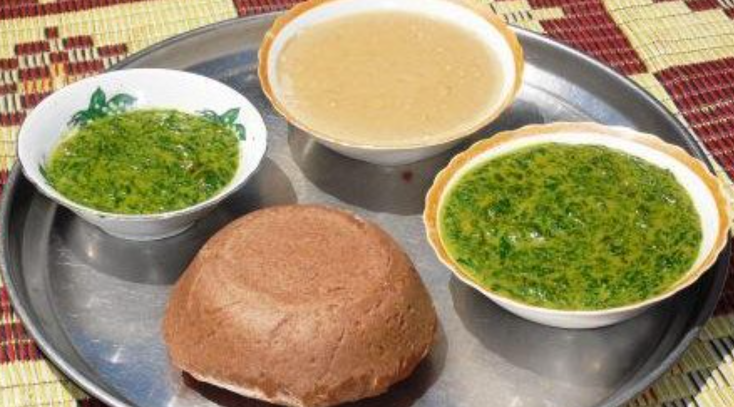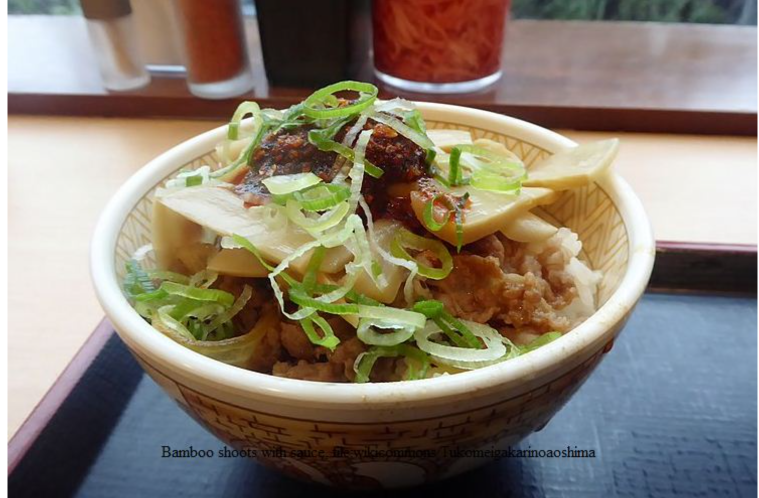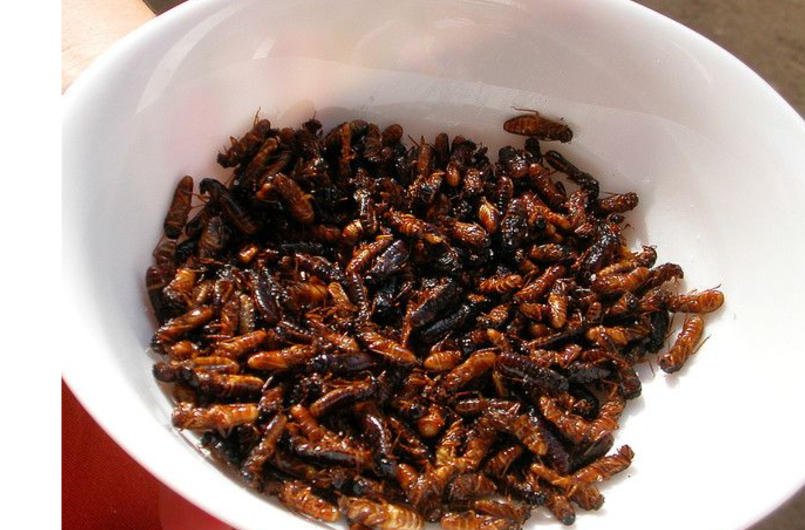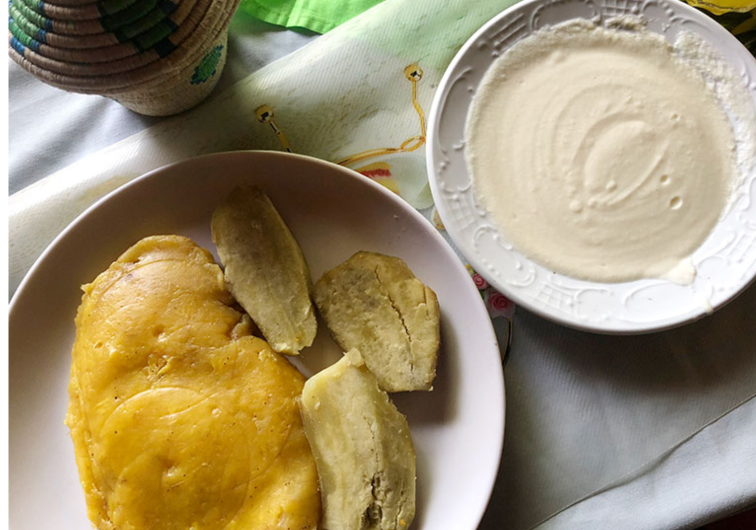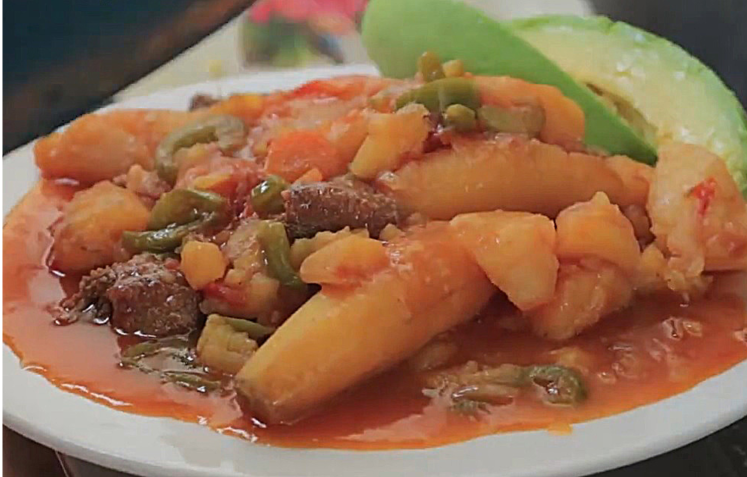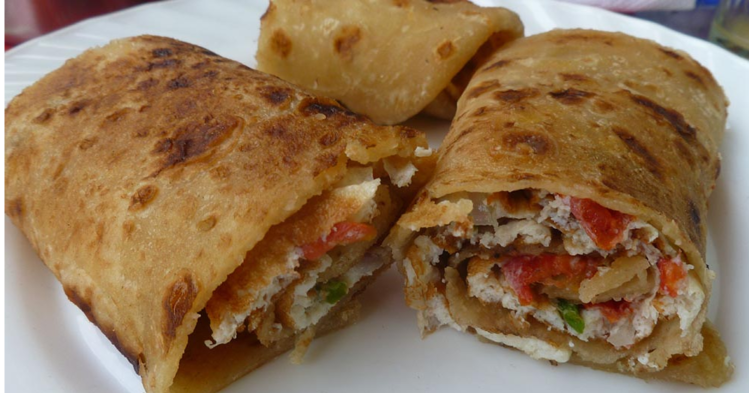Malakwang is the most sought out dish in the northern regions of Uganda extending to some parts of eastern Uganda. Malakwang is a bitter sweet delicacy with a tangy taste usually served with sweet potatoes, millet, posho or sorghum bread. Nolonger confined to northern Ugandans, malakwang has won many faithful In the urban centers and is served in some reputable restaurants in Kampala. Because of its bitter taste, the cooking is such that the first water used to boil the leaves Is disposed of as it is too strong to consume, the softened boiled leaves are then mixed in either sim sim or groundnut paste to give it a rich satisfying flavor.
Malewa is a specialty delicacy from Eastern Uganda common among the Bagisu people, a Bantu tribe settled around Mhale, Bulambuli, Manafwa. Bududa and Sironko. It is ever present feature on big ocasslons like wedding ceremonies and Imbalu or circumciscision festivals. Malewa is prepared from air dried smoked bamboo shoots giving it a rich flavor, it is mixed either with simslm or groundnut paste giving it a thick rich taste and feel. Malewa can be eaten with almost any Meal like rice, posbo, matooke, sweet potatoes, cassava. The locals in Bugisu commonly eat it with matooke and sweet potatoes.
White ants also known as Ming termites are another favorite delicacy enjoyed in Uganda in almost every region of the country. Like the grasshoppers, they are also seasonal only showing up at the onset of the rains.
A rich source of proteins, the white ants, can be fried, boiled, pounded into a thick paste and boiled into a cake. While it’s not uncommon for some people to eat them raw, they have a long shelf life when dried and packaged well. Today one can find them in supermarkets and most major food stores in Kampala and the major markets across the country.
Grasshoppers closely related to bush crickets is locally called Nsenene and a favorite snack among many Ugandans especially in the central regions of the country. These seasonal insects mostly show up during the two rainy seasons; in the months of April, May, June, October and November.
At the onset of the grasshopper season, grass hopper hunters erect light reflectors tilted towards a collection point while the the entire area is illuminated in very bright bulbs and light tubas to entrap the grasshoppers owing to their high affinity to light They are than gathered in sacks and transported to the markets for sale. The preparation is easy and straight forward, the limbs and for some the wings are pulled off and then either fried or boiled depending on preference and than sprinkled with onions, tomatoes and other ingredients of choice.
The grasshoppers can be eaten cold or warm and the new preservation methods mean that they can now be eaten all year long since one can pick them off supermarket shelves nowadays.
Think luwombo, think royalty. Created in the late nineteenth century for the Buganda Kingdom’s royal family, the luwombo, one of Uganda’s best dishes, was introduced by Kabaka (King) Mwanga’s chef. Its uniqueness in style of cooking delivers a clean delicious meal hard to match anywhere in the country. Its no wonder that the luwombo was hard to tie down within the walls of the royal palaces.
Today Luwombo is mainstream and what’s more is that some major adjustments have been made to its original style. Initially it was chicken together with its ingredients tightly wrapped in tender banana leaves then steamed to readiness. Today it has several variations admitting meat, groundnut stew, goats meat and any other sauce. A common feature on menus in major functions like introductions, weddings, graduation parties, luwombo has earned itself the undisputed number one spot for the most coveted dish in Uganda.
A delicious innovation of the cattle keeping Bahima of Ankole. The eshabwe is made from mature ghee and rock salt. This thick creamy paste takes patience and expert skill to perfect no wonder it’s brought from the rural regions made by elderly women who have practiced and stayed true to the craft for a long time.
Eshabwe used to be a reserve for special occasions like marriage ceremonies but owing to its increasing popularity more and more of it is being consumed In urban centers. It is often served with sweet potatoes, matooke, rice, millet or sorghum bread and any other food available. Take your taste buds on a journey with the delicate smooth taste of eshabwe while on your Safari here in Uganda.
Katogo directly translated as a mixture is a common breakfast meal eaten in Uganda. Originally it was a mixture of cassava chips and beans and was considered a low budget meal for rural folks.
Over the years however the town dwellers embraced the idea and made tweaks to the original concept introducing matooke ( green bananas) as the cassava chips replacement and than adding a variety of sauces like offal, beef, chicken, ground nut stew and vegetables. Foreign spices and adopted modern recipes chipped into the katogo have earned it a place in most of the top restaurants and hotels across the country. A light delicious meal, the katogo will set you up right for the day and leave you yearning for more.
The Ugandan rolex is a combination of egg omelets and vegetables wrapped in a chapati roll. The contents wrapped inside the chapati can be varied for instance one might prefer raw tomatoes, onions, cabbages or fried vegetables presenting a number of options for one to choose from creating a custom rolex variant.
The king of snacks in Uganda, the rolex was popularized by students who needed a quick meal because of time and budget limitations. Today it can be eaten over breakfast, lunch or for dinner. The rolex has taken a life of its own especially in the capital Kampala influencing rolex festivals throughout the year. A safari to Uganda without sinking your teeth into the famous rolex may leave your experience little hollow wondering what you might have missed.

